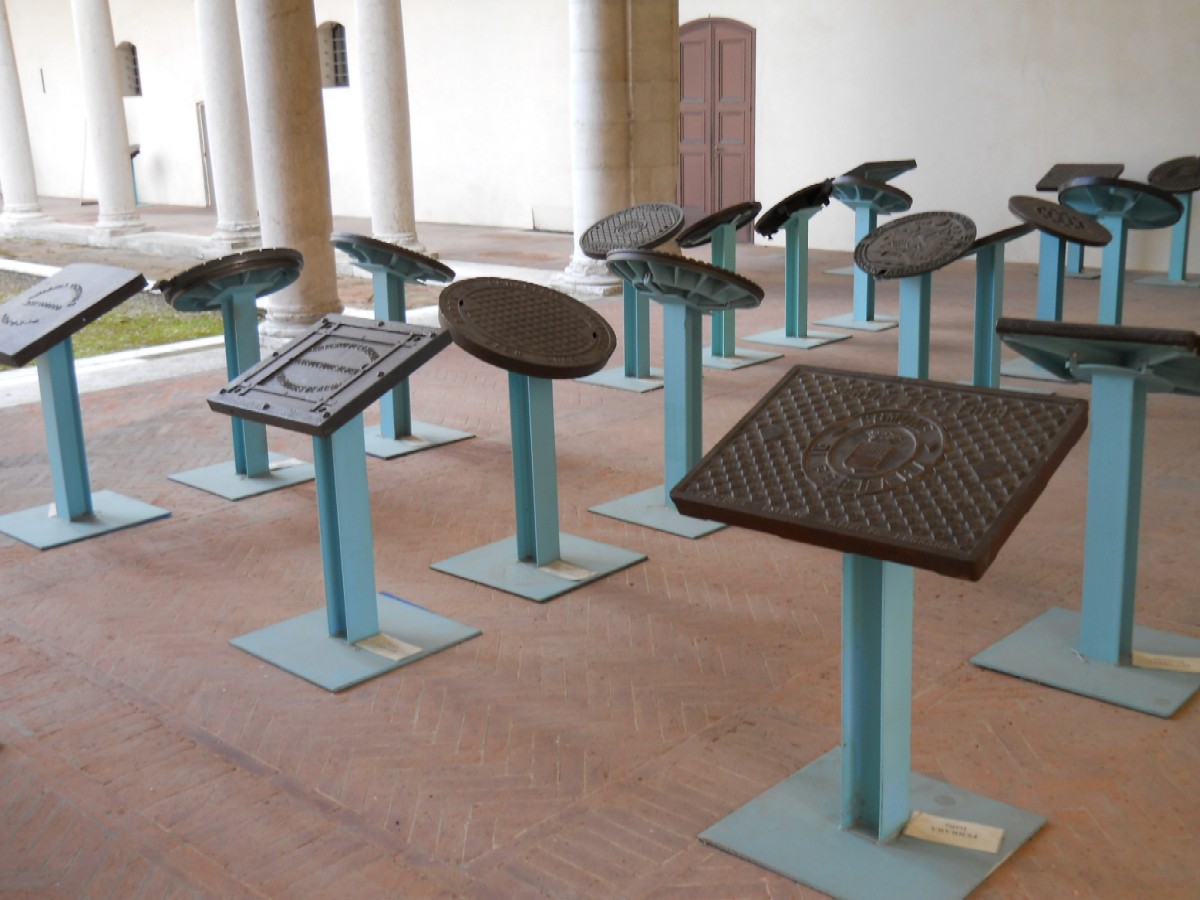
We tend to take common street items, such as the lowly manhole cover, for granted – but they can be things of beauty, says “Whimsy” columnist CLIVE WILLIAMS.

WHAT the lowly manhole cover covers is referred to as a “manhole” because it was always a man who worked in the hole in the ground.
Why does he need to be in the hole you might ask?
Well, manholes are commonly an access point for underground public utilities – allowing for inspection, maintenance, and system upgrades. The utilities may include internet cables, water pipes, sewer systems, telephone wires, electricity cables, stormwater drainage, and heating and gas systems.
In urban areas, manholes are generally found on roads, pavements and nature strips. In rural and undeveloped areas, telephone and electricity cables are usually carried on poles or pylons because it’s cheaper.
Manhole covers can be objects of beauty when they have nice designs. One thing I admire the French for is their clever use of design for making common street items more interesting. Lamp posts in Paris, for example, are often cast or moulded with creepers growing up them.
Anyway, having hopefully stimulated your interest in manhole covers, here’s a bit more information about them.
Manhole covers are usually round, primarily because they cover a round hole, which is the best shape to resist the compression of the surrounding earth. Round manhole covers are also easier to manufacture than square or rectangular ones; heavy iron ones are easier to move by rolling; and round covers can’t fall into the manhole they cover.
Square manhole covers are also common, but triangular ones are rare.
Manhole covers are traditionally made of cast iron, but may be constructed from precast concrete, or other composite materials (particularly where theft is a concern).
In the UK, scrap stealers use specially converted vans with a hole in the floor so that they can stop the van over a roadway metal manhole cover and remove the cast iron cover from inside the van. The resultant uncovered manhole becomes a major hazard for cyclists and motorcyclists, particularly at night.
A cast-iron manhole cover weighing around 140 kilograms will fetch up to $50 as scrap.
Scrap thieves without bespoke van conversions typically target locations that don’t have much traffic and aren’t heavily monitored by CCTV cameras. They usually make an effort to look legitimate, especially if stealing the manhole covers in broad daylight; they’ll often wear high-visibility gear and bring the construction tools needed to lift the heavy covers.
Calcutta, India seems to hold the record for losing manhole covers, with 10,000 disappearing within one two-month period.
A major concern for councils is the cost of replacement, which can run into hundreds of dollars per manhole cover.

Cities have developed several different deterrent measures. Some cities have begun placing locks on their metal manhole covers. Others work with local scrap dealers, so that anyone bringing in a manhole cover can be identified and reported. While much cheaper composite manhole covers can be used for areas without vehicle traffic, there is no suitable substitute for a heavy metal manhole cover for roadway use.
Fibreglass manhole covers are now commonly used in applications where infiltration, exfiltration or corrosion by hydrogen sulphide (from sewer gas) is a concern or where structures are factory integrated with a manhole before placement.
Because of legislation restricting acceptable manual handling weights, Europe has seen a move toward lightweight composite manhole cover materials. This also has the benefits of greater slip resistance and electrical insulating properties.
In urban areas, stray voltage issues can become a significant concern for utilities. In 2004, Jodie S Lane was electrocuted after stepping on a metal manhole cover while walking her dog in New York City. I am not aware of any Canberrans or their dogs suffering a similar fate.
On a lighter note. A passerby walking past a sewer manhole sees an old man inside, knee deep, going through the sewage. He asks: “What on earth are you doing down there?”
The old man replies: “Looking for my denture. I accidentally dropped it into the toilet and flushed it down the drain.”
Passerby: “Surely you don’t expect to find it?”
Old man: “Well, that’s where you’re wrong. I’ve already found three, but none of them have fitted…”
Clive Williams is a Canberra columnist.
Who can be trusted?
In a world of spin and confusion, there’s never been a more important time to support independent journalism in Canberra.
If you trust our work online and want to enforce the power of independent voices, I invite you to make a small contribution.
Every dollar of support is invested back into our journalism to help keep citynews.com.au strong and free.
Thank you,
Ian Meikle, editor









Leave a Reply